Of White and Ancient Feathers
Posted by Natascha Bushati, on 9 August 2010
I’ve just come back from a lab retreat in a country house in Sussex, UK. The weather was good and we had our scientific sessions, ranging from discussions on Sonic Hedgehog signaling in the neural tube to the latest super-resolution imaging techniques, outdoors in the courtyard. However, every once in a while, we would be interrupted by a group of white peacocks.
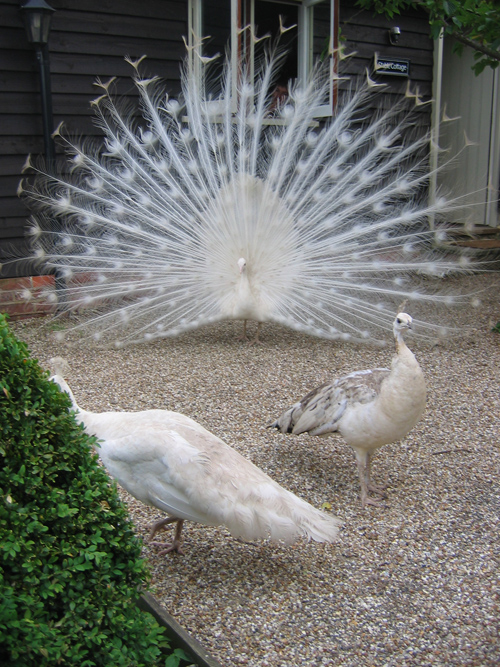 We thought they were albinos, but once I was back in London I did some research and found that white peacocks do not necessarily have a defect in pigment formation, as is the case for albinos. The feathers of peacocks (and several other birds) acquire most of their iridescent color by using optical phenomena such as interference, diffraction and scattering of light. This property is known as structural color and for peacocks it results from way the nanostructure of their feathers interacts with light. For different colors, these different nanostructures are on the scale of the perceived colors’ wavelengths. White peacocks seem to have an altered nanostructure in the barbules (secondary branches) of their feathers.
We thought they were albinos, but once I was back in London I did some research and found that white peacocks do not necessarily have a defect in pigment formation, as is the case for albinos. The feathers of peacocks (and several other birds) acquire most of their iridescent color by using optical phenomena such as interference, diffraction and scattering of light. This property is known as structural color and for peacocks it results from way the nanostructure of their feathers interacts with light. For different colors, these different nanostructures are on the scale of the perceived colors’ wavelengths. White peacocks seem to have an altered nanostructure in the barbules (secondary branches) of their feathers.
The birds intrigued me and I wanted to find out how the nanostructure of white peacock feathers is different from the more colorful varieties. However, I couldn’t find anything on this (Does anyone know? Please comment!). Instead I came across something else that took me in a different direction: The development of dinosaur feathers.
How do you study the development of a dinosaur? The obvious way is to compare a younger and an older fossil of the same species, and in China, Xu and colleagues have done just that. They discovered two juvenile specimens of the oviraptorosaur Similicaudipteryx. One is younger than the other and the structures of specific wing and tail feathers differ dramatically between the specimens: Those of the younger one have a ribbon-like structure proximally, whereas the older specimen displays longer feathers without ribbon-like features. This was unexpected because in modern birds, feather morphology does not change after hatching. The researchers concluded that Similicaudipteryx might have undergone molting of feathers at some stage after hatching. Of course, molting takes place in modern birds but it doesn’t result in such severe changes in morphology.
So far, so good. But what really struck me were their speculations about how this change in morphology might have been taking place molecularly. In modern feathers, bone morphogenetic protein (BMP), noggin and sonic hedgehog (SHH) regulate the formation of the different feather components. SHH induces apoptosis between the barbs (primary branches) of the feather. Without SHH, a continuous, ribbon-like structure would form, which is probably what happened in the proximal part the younger dinosaur’s feathers. Xu and colleagues speculate that in Similicaudipteryx, the induction of SHH and other barb-specifying genes were delayed compared to modern birds, where these genes are strongly expressed during the growth of even the earliest feathers. SHH, the regulator of neural tube patterning I deal with every day is thought to have a role in the development of strange dinosaur feathers!
If only we could make a transgenic dinosaur. Then again, maybe not.


 (7 votes)
(7 votes) (No Ratings Yet)
(No Ratings Yet)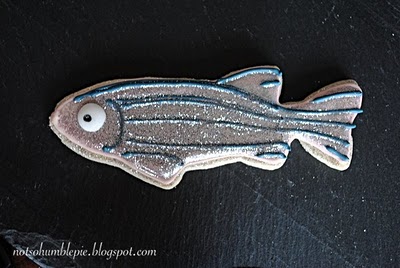
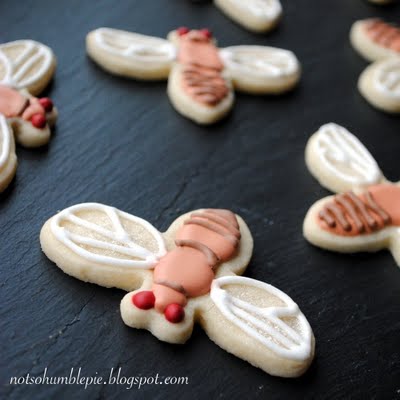
 (4 votes)
(4 votes)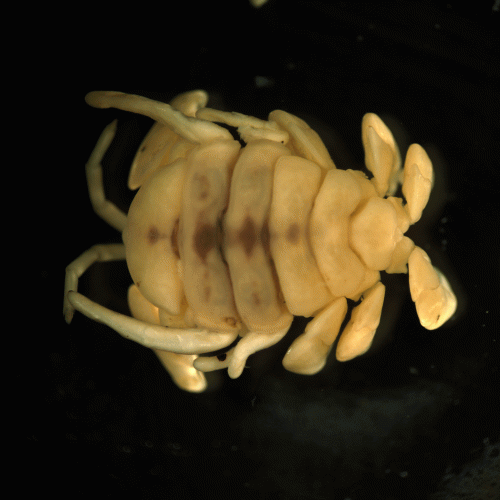
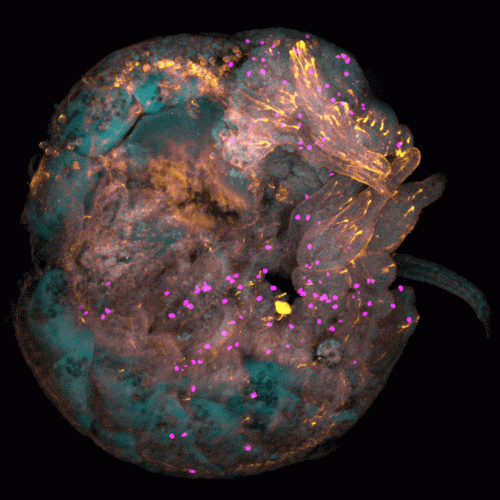
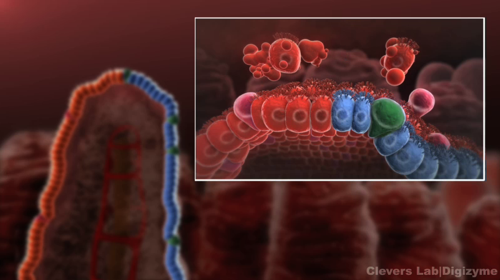
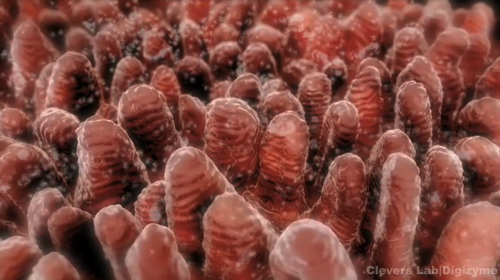
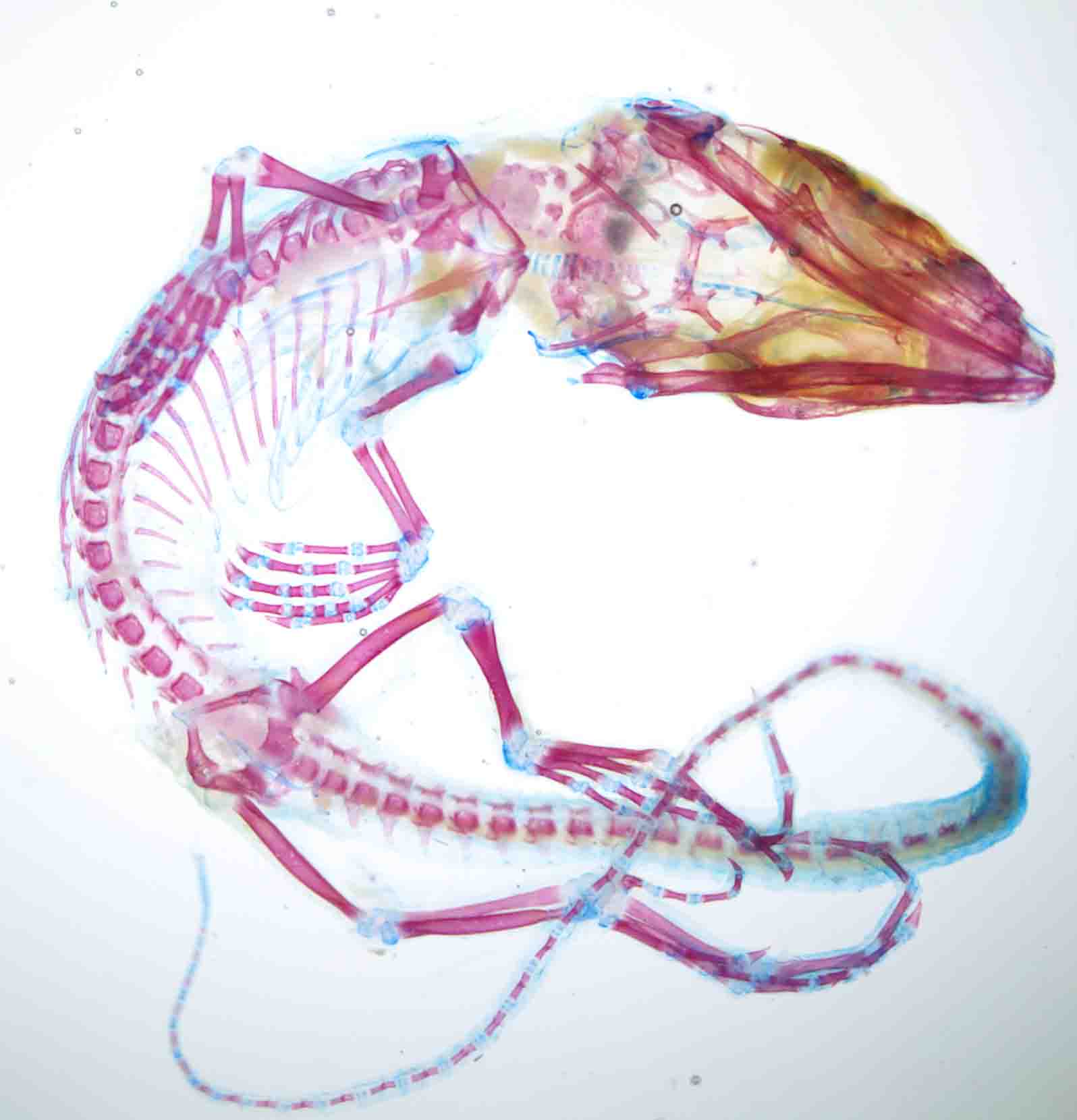 The course covers many vertebrate model organisms such as mice, chick, frog and zebrafish but we were also able to carry out some work on other organisms like sticklebacks, bats and even turtles! This was mostly thanks to Richard Behringer who brought an amazing array of different embryos for us to experiment on. On the left you can see a beautiful lizard, which I stained with alcian blue to show cartilage and alizarin red to show bone. This was particularly interesting for me as I am working on the development of the sternum for my Ph.D. project, so it was great to be able to see the morphological diversity in the sternum between species.
The course covers many vertebrate model organisms such as mice, chick, frog and zebrafish but we were also able to carry out some work on other organisms like sticklebacks, bats and even turtles! This was mostly thanks to Richard Behringer who brought an amazing array of different embryos for us to experiment on. On the left you can see a beautiful lizard, which I stained with alcian blue to show cartilage and alizarin red to show bone. This was particularly interesting for me as I am working on the development of the sternum for my Ph.D. project, so it was great to be able to see the morphological diversity in the sternum between species.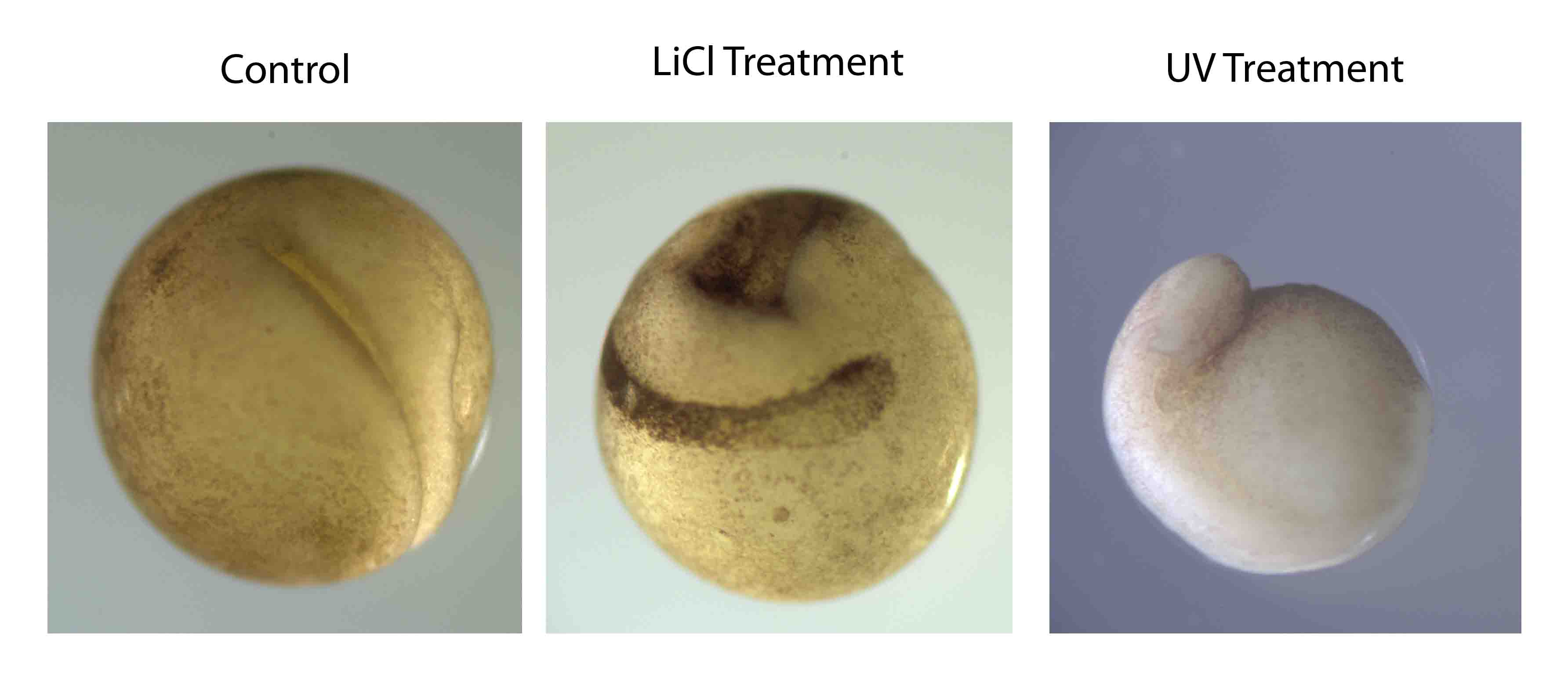
 The vertebrate lymphatic system consists of lymphatic vessels, which collect fluid from the tissues and return it to the blood, and lymph nodes, which are involved in immune defence. Lymphatic vessels, like blood vessels, form a complex vascular network, but what guides the development of this network? According to Stefan Schulte-Merker and co-workers, arteries provide crucial guidance cues to the lymphatic endothelial cells (LECs) that form the lymphatic network in the zebrafish trunk (see p.
The vertebrate lymphatic system consists of lymphatic vessels, which collect fluid from the tissues and return it to the blood, and lymph nodes, which are involved in immune defence. Lymphatic vessels, like blood vessels, form a complex vascular network, but what guides the development of this network? According to Stefan Schulte-Merker and co-workers, arteries provide crucial guidance cues to the lymphatic endothelial cells (LECs) that form the lymphatic network in the zebrafish trunk (see p. 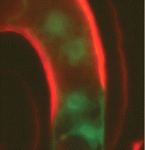 Fertilization in flowering plants involves two sperm cells and two female gametes – the egg cell and the central cell, progenitors of the embryo and endosperm, respectively. A previous study suggested that Arabidopsis plants carrying loss-of-function mutations in cyclin dependent kinase A1 (CDKA:1) make a single sperm cell that preferentially fertilizes the egg cell to produce an embryo that triggers central cell division. Now, Frédéric Berger and colleagues overturn these widely accepted results by showing that a significant proportion of cdka;1 pollen actually delivers two sperm cells (see p.
Fertilization in flowering plants involves two sperm cells and two female gametes – the egg cell and the central cell, progenitors of the embryo and endosperm, respectively. A previous study suggested that Arabidopsis plants carrying loss-of-function mutations in cyclin dependent kinase A1 (CDKA:1) make a single sperm cell that preferentially fertilizes the egg cell to produce an embryo that triggers central cell division. Now, Frédéric Berger and colleagues overturn these widely accepted results by showing that a significant proportion of cdka;1 pollen actually delivers two sperm cells (see p. 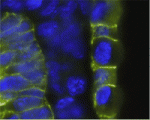 Mediator, a conserved multiprotein complex that connects DNA-bound transcription factors to the RNA polymerase II machinery, is part of the intricate mechanism that regulates eukaryotic transcription. The Med12 mediator subunit is required for gene-specific functions during zebrafish development, but are its developmental functions conserved in mammals? On p.
Mediator, a conserved multiprotein complex that connects DNA-bound transcription factors to the RNA polymerase II machinery, is part of the intricate mechanism that regulates eukaryotic transcription. The Med12 mediator subunit is required for gene-specific functions during zebrafish development, but are its developmental functions conserved in mammals? On p. 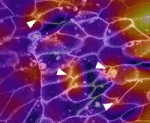 The morphogenetic movements that shape embryos depend on the forces generated by embryo’s cells and on the resistance of its tissues to these forces. Microtubules and F-actin are largely responsible for both these cellular properties but the contribution of these structural elements to morphogenesis is unclear. Now, Lance Davidson and colleagues unexpectedly report that nocodazole-induced depolymerization of microtubules stiffens the converging and extending dorsal tissues in Xenopus embryos (see p.
The morphogenetic movements that shape embryos depend on the forces generated by embryo’s cells and on the resistance of its tissues to these forces. Microtubules and F-actin are largely responsible for both these cellular properties but the contribution of these structural elements to morphogenesis is unclear. Now, Lance Davidson and colleagues unexpectedly report that nocodazole-induced depolymerization of microtubules stiffens the converging and extending dorsal tissues in Xenopus embryos (see p. 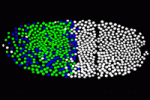 Morphogenetic gradients determine cell identity during development through the concentration dependent activation of target genes, but how the precision of the response to morphogens is determined is unclear. On p.
Morphogenetic gradients determine cell identity during development through the concentration dependent activation of target genes, but how the precision of the response to morphogens is determined is unclear. On p.